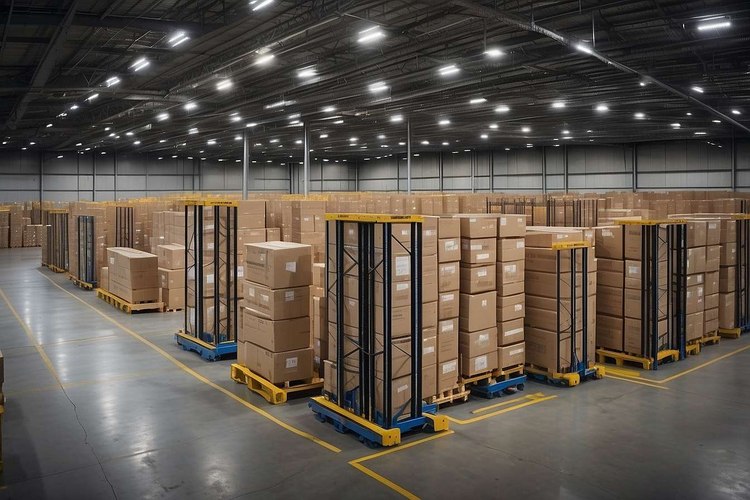Flexible warehouse jobs: what to know about picking and packing work
Warehouse picking and packing positions offer flexible employment opportunities across various industries. These roles involve selecting items from inventory and preparing them for shipment, requiring attention to detail and physical stamina. Modern warehouses utilize technology-driven systems to streamline operations, making these positions accessible to workers with different experience levels.

Warehouse operations form the backbone of modern supply chains, with picking and packing representing common job categories within this industry. Understanding the nature of warehouse work can help job seekers evaluate whether this field aligns with their career goals and physical capabilities.
Understanding picking and packing roles
Picking work typically involves retrieving specific items from warehouse shelves based on customer orders or internal requests. Workers in such roles generally use handheld scanners, pick lists, or voice-directed systems to locate products efficiently. Packing work focuses on preparing items for shipment by selecting appropriate packaging materials, ensuring product protection, and applying correct labeling. These functions require coordination between different warehouse areas and adherence to quality standards.
Warehouse operations commonly employ various picking methods, including zone picking, batch picking, and wave picking. Each approach optimizes workflow based on order volume and product characteristics. Workers may specialize in specific zones or rotate between different areas depending on operational needs.
Skills and qualifications for success
Warehouse work generally requires strong attention to detail, physical endurance, and basic mathematical skills for inventory counting. Most warehouse roles involve the ability to lift packages weighing 25-50 pounds repeatedly throughout shifts. Computer literacy helps workers navigate warehouse management systems and handheld devices effectively.
Communication skills prove valuable for coordinating with team members and supervisors. Problem-solving abilities help workers address discrepancies in inventory or packaging requirements. Many employers in this field provide on-the-job training for specific equipment and safety procedures, making warehouse work accessible to candidates without prior experience.
Forklift certification, while not always required initially, can significantly enhance employment prospects in warehouse environments. Safety training certification demonstrates commitment to workplace protocols and may be preferred by employers.
Work environment and hours
Warehouse environments vary significantly based on industry and company size. Climate-controlled facilities maintain comfortable temperatures year-round, while others may experience seasonal temperature variations. Lighting, noise levels, and workspace organization differ between modern automated facilities and traditional warehouse settings.
Shift structures in warehouse operations typically include traditional day shifts, evening shifts, overnight shifts, and weekend schedules. Many warehouses operate continuously to meet customer demands, creating various scheduling options. Part-time and temporary employment structures exist within warehouse operations, particularly during peak seasons like holidays or back-to-school periods.
Safety protocols emphasize proper lifting techniques, equipment operation procedures, and hazard awareness. Personal protective equipment requirements may include safety shoes, high-visibility vests, and protective eyewear depending on specific work areas.
Career advancement opportunities
Warehouse employment often serves as a foundation for supervisory roles, quality control work, or specialized equipment operation. Workers can potentially progress to team leader roles, training coordinator functions, or inventory management within organizations. Cross-training in multiple warehouse functions increases advancement potential and job security.
Some companies offer tuition assistance for logistics-related education or professional certifications. Warehouse management, supply chain coordination, and transportation logistics represent potential career paths for motivated individuals. Experience gained in picking and packing provides foundational knowledge applicable to various supply chain roles.
Internal promotion policies vary by company, but many organizations prioritize hiring from within for supervisory roles. Performance metrics, attendance records, and safety compliance influence advancement opportunities.
Tips for success in picking and packing jobs
Maintaining consistent productivity while ensuring accuracy requires developing efficient work routines and staying organized throughout shifts. Learning warehouse layout quickly helps reduce time spent locating items. Building positive relationships with coworkers and supervisors creates supportive work environments and potential networking opportunities.
Staying physically fit helps manage the demands of warehouse work and reduces injury risk. Proper hydration and nutrition support energy levels during long shifts. Following safety protocols consistently protects personal wellbeing and demonstrates reliability to employers.
Seeking feedback from supervisors and experienced coworkers accelerates skill development. Volunteering for additional responsibilities or cross-training opportunities demonstrates initiative and commitment to professional growth. Maintaining punctual attendance and positive attitudes contributes to favorable performance evaluations.
Warehouse picking and packing work provides valuable experience while offering schedule flexibility that appeals to many workers. This field combines physical activity with systematic processes, creating opportunities for skill development and potential career advancement within the logistics industry.




